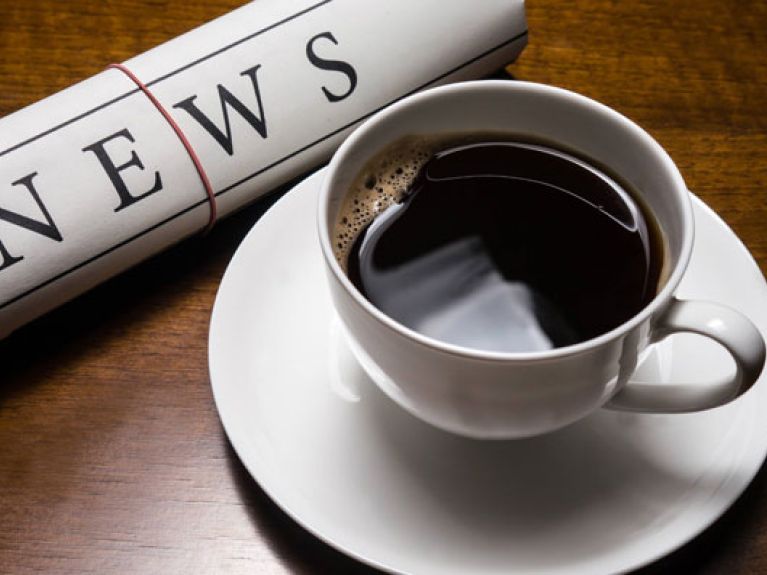The comeback of the coffee break
In the past, no one would ever have thought of crossing the street with a cup of coffee. Drinking coffee meant a break. Perhaps it will be like that again soon.

I’m not the only one. There are lots of people like me who find nothing more relaxing than the prospect of a cup of coffee. It could even be regarded as the Germans’ panic room, after all, for them coffee is an emergency exit, a place of refuge and thus a very basic beverage. Every German drinks an average of 162 litres of coffee a year. Not even mineral water (143 litres) or beer (107 litres) can keep up with that. It should therefore come as no surprise that it was a German woman who dreamt up one of the most important coffee innovations: Melitta Bentz, a Dresden housewife, invented the drip brew paper coffee filter – or Melitta filter for short – in 1908. Presumably Mrs Bentz was tired of getting grains of ground coffee caught between her teeth. In her day, coffee was still made cowboy-style – by boiling it up in water. Her prototype hand filter consisted of blotting paper from one of her sons’ exercise books and a perforated tin can. (Incidentally, today the Melitta Group is an international business employing 3,300 people – and managed by Melitta Bentz’s great-grandson.)
The hot coffee that had dripped through the filter paper certainly tasted much better. Indeed, it was so much better that a whole culture emerged around it. This included typical German institutions like the Kaffeekränzchen (coffee circle) or Kaffeeklatsch (coffee gossip). The latter stems from the fact that people met to drink coffee and not only eat XXL slices of cake, but also hear the latest gossip. For decades, coffee was something like the German’s sign for a break, Hatha Yoga for all, a means of team-building both at work and at home, and a time unit per se. Drinking a cup of coffee meant at least a half-hour break and therefore made more valuable contributions to work-life-romance than any company party. No one would ever have thought of going outside with their boiling hot drink. What for? Then, during the 1990s, the first “coffee-to-go” arrived from the United States, as well as the coffee capsule from Switzerland. Since then you can choose between 20 alternative flavours so that now just ordering a coffee involves more decisions than applying for a mortgage. Most people are obviously so busy deciding that they don’t realise they are paying considerably more for a kilo of coffee capsules than for loose coffee. But that’s nothing compared with the price the environment pays. The discarded packaging represents thousands of tonnes of waste. And roughly 2.5 million trees a year have to be felled to produce the paper cups used for coffee in Germany alone. Every hour, 320,000 of these cups are thrown away. One would almost wish the whole country a great aunt who would present them with a pound of “good ground coffee” instead of friends who arrive with one of those fancy gift boxes containing 20 different flavours of coffee capsules.
But there is light at the end of the coffee tunnel. And there you will see someone brewing coffee the traditional way. The comeback of filter coffee goes by the name of “pour over” and is only found on the menu of the hippest coffee houses in Berlin, Hamburg and Munich. It takes us back to our coffee culture roots by way of a porcelain cup, back to where coffee once again gives us a short break, to where it is a simple pleasure and therefore relaxing, despite its exhilarating effect. Then nothing will frighten us, not even the over 1,200 calories in Aunt Erika’s delicious butter-cream cake, which complements a cup of coffee as well as the latest neighbourhood gossip. ▪
CONSTANZE KLEIS lives in Frankfurt am Main. The best-selling author prefers to drink her coffee black, with sugar, and – when there is some left over – even drinks it cold.

